#Japanese article
Text
高齢化社会の単語
I recently read this article on NHK News Web Easy: 日本人の人口が少なくなった 東京都の人口も少なくなった
Here is some vocabulary from the article!
国内 こくない internal, domestic
在住 ざいじゅう residing, living, dwelling
前年同期比 ぜんねんどうきひ compared to the same period a year ago
連続 れんぞく continuation
減少 げんしょう decrease, reduction, decline
人口 じんこう population
総務省 そうむしょう Ministry of Internal Affairs and Communications
#日本語#japanese#japanese langblr#japanese studyblr#langblr#studyblr#記事#単語#語彙#japanese article#japanese vocabulary#tokidokitokyo#tdtstudy
42 notes
·
View notes
Text


Reala Doodles
#kdddoodles#reala#nights into dreams#apparently there is a japanese magazine article saying that Reala doesn't like flying and does it only when necessary
526 notes
·
View notes
Text

An's new school uniform has a black band around one arm. This is possibly based on an older practice of wearing a black armband after the death of a loved one. This armband was worn to show you were in mourning or to commemorate the deceased person.
#submission#also fun fact this is still done just not that common outside of sports#you can even find an article about a japanese sports team doing it for a game back in july of this year#<- tags from submitter#an shiraishi#nagi kotaki#project sekai
500 notes
·
View notes
Text

Killua drawing by Togashi, which was a gift for Yumiko Seki from Sakurazaka46 for her graduation from the group. So beautiful!
Here's the tweet on this from @yyh4ever:
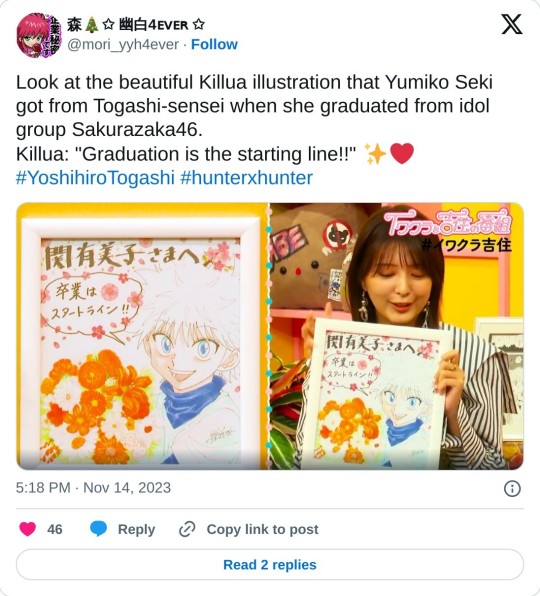
#killua#yoshihiro togashi#hxh#hunter x hunter#I'll post more about the show later hopefully#there's an article that summarizes it but I'm trying to decide if I want to trust translation software or wait for a better translation#my Japanese skills aren't quite up to translating something of that length and complexity on my own sadly
213 notes
·
View notes
Text
Nightow: I remember discussing Legato’s death and what to do with the climax surrounding it with Kuroda-san and Jinguji-san in the Denny’s in Aoyama for about 8 hours.
It's beautiful to me that Legato's demise was plotted at a Denny's at absurd hours of the day [x]
#Trigun#Like#There are no words#I know Japanese Denny's are different but like#The whole article is great#FINALLY an official source on the title meaning 'three guns'#But#Oh my god
178 notes
·
View notes
Text
Stop saying that Reo refers to his dynamic with Nagi as just a business partner, that's not factually true
Or well, it's out of context and only partially true
I keep seeing this argument brought up in nagireo meta as a way to bring ammo to the interpretation that Reo sees their dynamic as transactional while Nagi cares for him as a person, using the Barou scene as a frame of reference, but. As someone who read the whole manga in japanese, fun fact! There's another time where their relationship is brought up with a descriptor before that scene, and it's in fact Reo who refers to Nagi as his partner first. Not a business partner, just a partner. Someone you spend time with.


To be precise, the word he uses is 相棒 ("aibou"), which, second fun fact, is the same word Bachira used to describe his relationship with Isagi (in the scene where he says "I love you, partner". Just stressing that cause I find it amusing lol). In Bachira's case, this word was officially translated as "buddy". It basically means partner/companion/comrade. As you can see, there's no exploitative subtext, unless you're willing to read that into Bachira's line as well.
This scene was in chapter one of episode Nagi, so it's Reo who sets the tone of their buddying relationship. Nagi just follows.

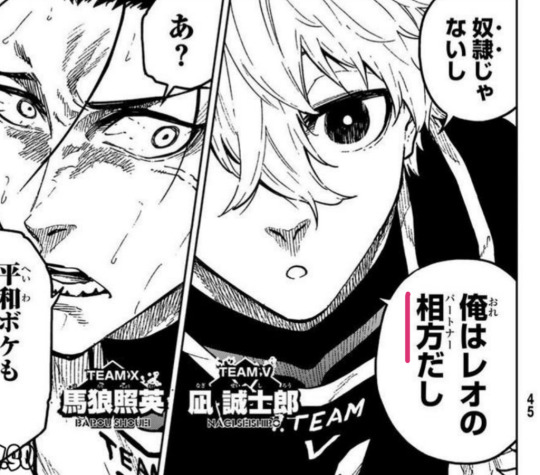
When Barou accuses him of being a mindless slave that only follows Reo's orders then, Nagi's prompt response is to call himself "Reo's partner, not a slave", using the word 相方 ("aikata") this time. As you might have noticed, it's almost the same word! Same first kanji, almost no differences in nuance as far as the meaning goes. This one too means partner, companion.
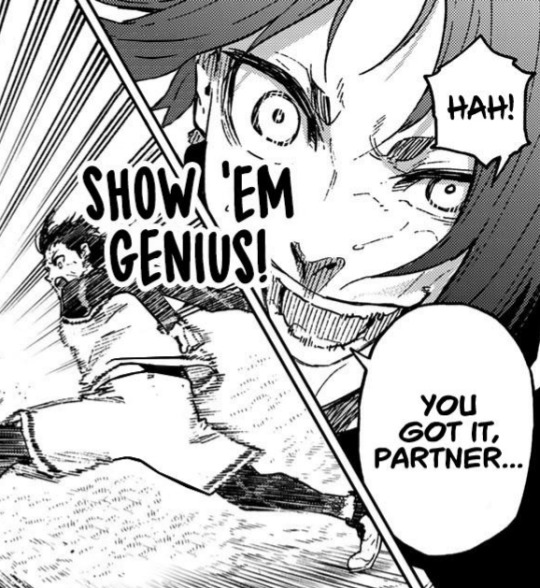

So, where does the confusion come from? Well, the thing is, Reo does call Nagi his business partner, too! A whole total of once, and it made more sense in context. The reason why this got more attention than the line in chapter one, I believe, is because Reo says it shortly after Nagi candidly called him his aikata, so it jumps out more and makes Reo sound so much colder than he is.
But again, context!
Given how Reo's the first to put a friendly label on their relationship, clearly the intent here is not to tell us he secretly only sees Nagi as an asset whose potential he's investing in. More like, this line was in response to this,
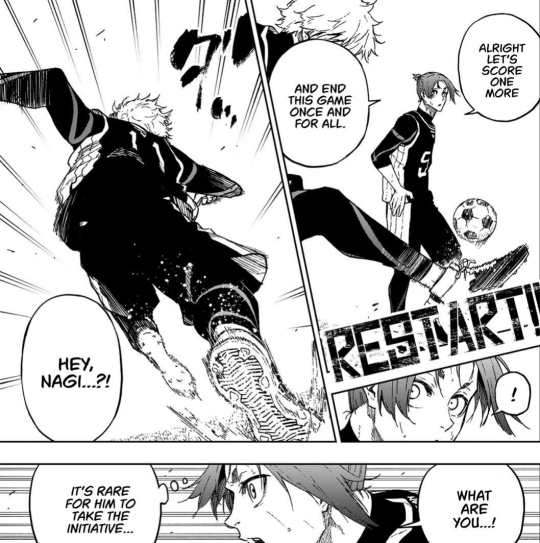
Nagi's ego rearing its head at long last, and him taking the initiative in a play for the first time. Here he calls him his business partner because Nagi's finally rising to meet him as an equal, instead of simply trudging along because of Reo's pushing. It's Nagi who requests an assist, and Reo enthusiastically provides it, and remarks upon it with this term. But, and please note, in all the three different occurrences, no matter the word in kanji, the furigana always spells out "partner", cause that's what's the focus
So please stop saying that Reo doesn't give the same weight to their friendship as Nagi does, that's just untrue. They both obviously care about each other, and their actions show it better than their words, tbh.
I guess one might still overanalyse the fact that they don't use the same exact term for partner, and wonder what the difference is, as one (me) does. This is what I found (with a japanese source for more accuracy):
「相棒」と「相方」の違いとしては、「相棒」には「ひとつの目的を達成するために共に助け合う相手」といったニュアンスがあり、「相方」には「人柄や性格を理解し合いながら、苦楽を共にする相手」といったニュアンスがあります。
Inputting this into a machine translator cause it's 1am and I don't have the brainpower to translate it myself:
The difference between "buddy" and "partner" is that "buddy" (=aibou) has the nuance of "a partner who helps each other to achieve a goal," while "partner"(=aikata) has the nuance of "a partner who understands each other's personality and character and shares hardships and joys.
Which I feel is a much better distinction that makes a lot more sense with their respective motivators/feelings. Reo sees Nagi as the person at whose side he'll be able to win the world cup, thus it makes a lot of sense for him to use aibou. Nagi gave him the confidence to think himself world class despite his father's scorn. He's his partner in crime, so to speak. While Nagi sees Reo as the first person who saw past his weirdness, understood him better than most, and as the companion he can always circle back to and tell him about the joys and hassles hardships he went through
Signed: a pedantic nagireo fan who thinks they're both the same shade of simp
#Nagireo#Nagi seishirou#Mikage reo#Episode nagi#Bllk thoughts#I have been stewing on this for weeks now#I was planning on writing a better post on it#But hey this is what you get#If you want to laugh I could still expand on this topic#Cause when I was digging in my liguistic research hole I found an article#Dissecting how japanese speakers feel about calling their romantic partner aikata#And some of the stuff it said was amusing when you read it through the lenses of nagi calling reo his romantic partner with that word lol#Anyway I'll stop rambling now thanks for reading#They live rent free in my head
99 notes
·
View notes
Text
Koisenu Futari Production Journal ⑩ (translation pt. 1)
part 1 of 3 | part 2 | original article here
this is kind of long (and it's only part one!) so I'm putting it under the cut. if you catch any errors, let me know!
Hello, I am Sayaka Takahashi, the costume director of Koisenu Futari.
In a drama, the costuming of a character plays the fundamental role of adding realism to a characterization. In addition to that, however, I think costuming expresses a “background” that can’t be conveyed by the dialogue or storyline alone, and gives viewers the chance to dig deeper into the characters.
I especially tried to keep this in mind while styling the characters for this show.
Like many, I first heard of the existence of aromantic and asexual people while working on this show. Although there were many new surprises in this regard, reading through the script and understanding the characters better helped me to understand that they were all very fascinating. I soon began working on expanding upon the impressions I got through the costumes.
Approachable and somewhat delicate, despite their strong sense of individuality—in order to convey this impression, I used a variety of colors in the composition of each character’s outfits. The costumes needed to be heavily emphasized in order to come across as colorful in a show with lots of location shooting, but I tried to add color freely without getting boxed in by that.
I will specifically explain the costuming processes of Sakuko, Takahashi, and Kazu.
⚫Sakuko’s Costumes
When styling Sakuko, I tried to ensure that she immediately came off as a bright and likeable character.
At first, I developed a soft, fluffy look using pastels and muted colors, and incorporated recognizable trends such as frills, see-through fabrics, and puffed sleeves in order to create the image of a girl who has fun with both her work and her fashion.
I also expressed her sociable nature using the colors of her jackets and the balance of her backpack. However, after her encounter with Takahashi, she begins to realize that she had been subconsciously changing herself to suit the needs of the people around her.
When Sakuko goes from realization to acceptance, we see her world become more vivid and colorful. This is when her clothes and accessories begin to gradually change. We decided that she had liked rather large earrings even before her realization, and used those alongside her backpack to emphasize her individuality.
While the outfit she wears to visit Takahashi’s home for the first time is a normal commuting outfit, the balance of color used to express her joy and excitement at finally being able to relate to someone, as well as the vigor with which she innocently barges into the house, makes it one of her main looks.
And in episode 3, the coat Sakuko comes across during the shopping scenes in episode 3 becomes a vital part of her awakening to a newfound sense. For this scene, we looked for something very impactful and something that, above all else, suited Sakuko the best. Ms. Kishii looks very good in vivid colors, especially red, so we unanimously decided on this bright red coat during the costume fittings. This coat becomes the start of Sakuko’s discovery of a new part of herself as she begins to try out clothes and accessories she had never chosen to wear previously.
Starting from episode 6, there is a clear change in Sakuko’s appearance, where Takahashi’s grandmother’s influence can be seen. Her style begins to broaden as she begins to embrace vintage clothing and accessories, such as brooches, and begins incorporating more masculine elements. Specifically, we introduced elements that we had been avoiding up through episode 5, such as second-hand clothing, denim, primary colors, black, and large earrings.
I hope we were able to convey the relief and freedom Sakuko feels as she chooses to wear the things that she likes without having to care about what others think of her.
thanks to @dollopheadsandclotpoles and many others for their kind words of encouragement - I hope you enjoy!
part 2 | original article here
#koisenu futari#sakuko#miwa translates#i can't tell if it's my reading comprehension skills deteriorating or if the text was too awkwardly written to begin with#but this was weirdly difficult to translate#especially since it's technically the first time i've translated anything of this scale from japanese to english#it's a fun article though!
43 notes
·
View notes
Text
i realized recently i didn’t know how to talk about autism in japanese, so here’s some vocab!
自閉症(じへいしょう) = autism
自閉スペクトラム症 = autism spectrum disorder
対人(たいじん)関係(かんけい) = interpersonal relations
こだわり = obsession; in this context: special interest
ひとりごと = talking to oneself
オウム返し(がえし) = parroting words; in this context: echolalia
好き嫌い(すききらい) = pickiness (about food)
感触(かんしょく) = texture
療育(りょういく) = education and support of disabled children
i gathered most of these from this webpage. if anyone has others, please feel free to add :)
#vocab#japanese#japanese vocab#日本語#langblr#also if you want to know how to say something else pls feel free to ask me to look for it!#i'm not autistic so idk if this vocab is helpful for talking about one's own autism#but i also get it's hard to go digging through native japanese articles for that kinda stuff#sasha.txt
135 notes
·
View notes
Text
In case this article goes down, here is an archived version.
Because it was a hot topic on Japanese social media recently, here an article introducing Lolita and Girly Kei as two individual fashion styles while explaining their similarities and differences.
131 notes
·
View notes
Text
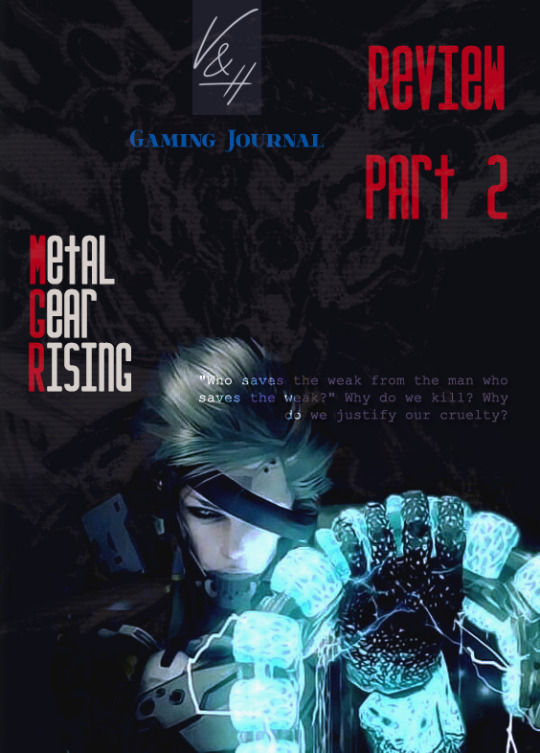
Part 1 is here
It is impossible to defeat nature and its laws. You cannot destroy the established order of things, because sooner or later it will return to the starting point, albeit modified. Part of the eternal order is war. This is a rather conventional character, which, nevertheless, has all the features of eternal evil, which the main character must defeat. Before the battle, Sundowner reveals another revelation to Raiden: he is too blinded and naive to think that he can change the world. War is part of cruel human nature. This is an outdated tool, which we have not been able to completely discard. But like a real virus, rooted in the very middle, it evolved with us, adapting to the conditions of the times.
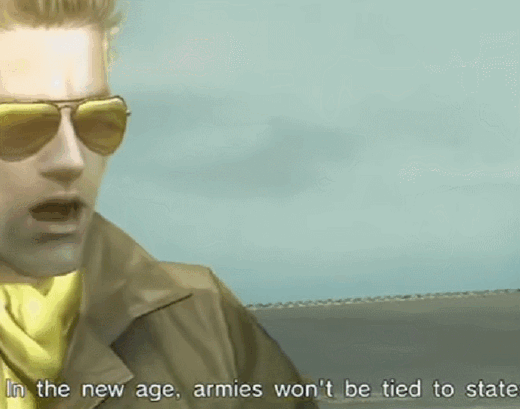
War is indifferent to moral guidelines and honor, deaf to human suffering and merciless to victims. This virus is ready to manifest itself at any moment, as soon as the system crashes. What for Raiden as a person is a matter of morality, for the World Marshal as a large military company is supply and demand. Even the "Patriots", well known to Raiden, did not invent anything new. The fact that after their "disappearance" history continues in the same direction is only proof that the established order cannot be defeated. This is what Sundowner actually says: Raiden with his good intentions will not change the world. PMC has offices all over the world, and therefore their products are in demand. They are only suppliers working for the war market. After all, war is a business hidden behind the face of morality, and the person in it is a commodity.
This again resonates with the rest of the games in the series, where the main unit is not so much the metal gears themselves, but the people behind their creation and control. Of course, the crown of creation of both nature and man is not a perfect tank, but the Legendary Soldier. Big Boss used to be the one. The same fate awaited Raiden. Towards the end, however, MG Rising moves in a slightly different direction, touching on the theme of the "ideal society". As the Patriots once fought for a single ideal world, so Armstrong seeks to create an ideal society where "people will die and kill for what they BELIEVE". Be that as it may, history constantly shows that an imperfect man cannot create a perfect society. After all, it cannot become even the best version of itself. MG has something of the dystopia inherent in the cyberpunk genre. But, at the same time, it remains close to reality, where some wars are fought to stop other wars.
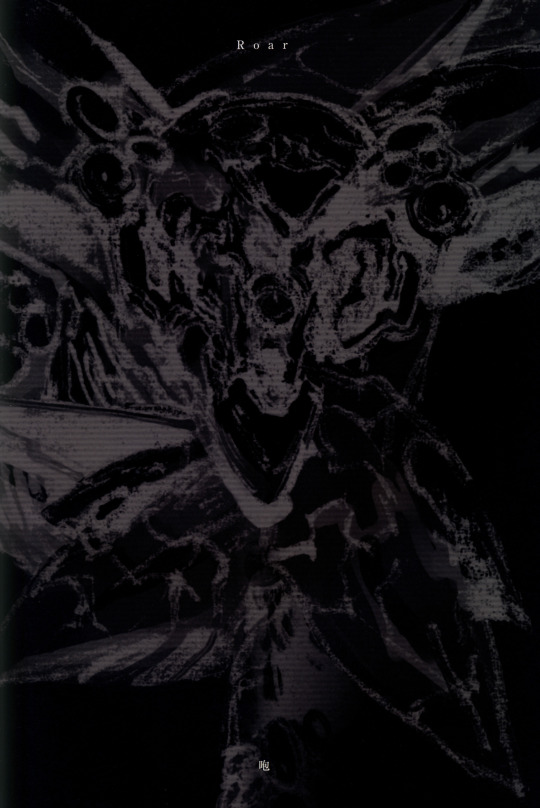
Each war has its own methods of achieving the goal. I like that MG Rising raises the question of the facelessness of the enemies that Raiden kills in packs. Their fate does not interest you as long as it is only a dummy for beating. But as soon as you imagine in front of you a person who has life, destiny and its own will, it becomes morally difficult to destroy them. Maybe that's why it's much more difficult for me to kill innocent NPCs in modern games - they suffer too realistically and look like real people who have their own lives. Giving the enemy human traits is what Sam uses to break Raiden mentally: reality doesn't match his moral principles. It turns out that they are just a cover for his true nature. But as a player, we lean more towards our main character, considering his (that is, our) actions a priori correct. Raiden's reasoning about the sword as an instrument of justice gives us a moral discharge: we destroy the villains who exploit the weak, and therefore do nothing wrong.
But all this is just an illusion. There is no moral attitude that would give a person the right to take the life of another person. "Who saves the weak from the man who saves the weak?" Through the mouths of the characters, the game in a peculiar manner breaks through the fourth wall, addressing the player. Why do we kill? Why do we justify our cruelty? Perhaps Monsoon's phrase that nature cannot be defeated does not mean only the world order. But also a person who has always been marked by cruelty, and therefore cannot defeat himself. As Raiden, we have no right to judge or condemn someone to death. But our internal attitudes, they are memes, give us an excuse, and the game gives us such an opportunity.
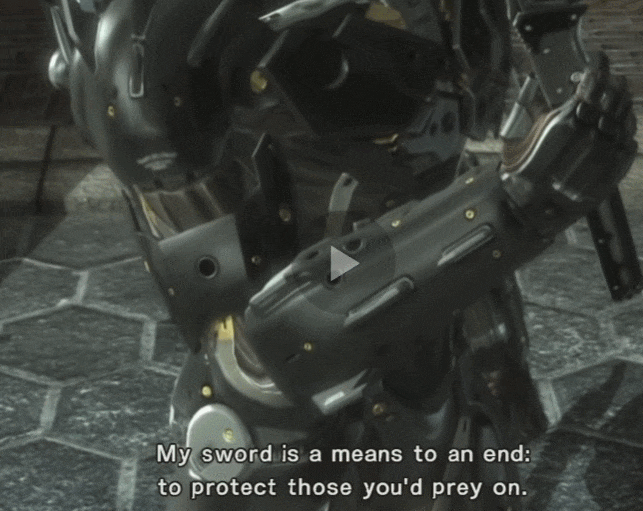
In the general sense, a meme is a unit of information. An attitude or idea that is repeated in different variations and transmitted by imitation or learning. The thesis Meme as a gene was formed by the scientist Richard Dawkins in the 1970s, comparing cultural phenomena with human genes, which copy themselves and are ultimately subject to natural selection. In fact, this is all that Monsoon is talking about: memes (that is, cultural attitudes) influence our behavior, the way we communicate and perceive reality. Culture, religion, our own will - everything is formed from the outside and imposed on us as a given. However, not all cultural phenomena undergo selection. In the struggle for the human mind, the "stronger" meme survives, the one most successfully replicated by the carrier, and therefore more valuable.
Raiden wins with his tool of justice meme Mistral with her thirst for revenge because his beliefs are stronger. But this fake facade of nobility is not enough to defeat Monsoon's nihilistic worldview. Dawkins claims that memes adapt quickly, easily deforming under external conditions. All memes disappear, but are immediately replaced by new ones. Breaking Raiden's unnatural mindset, Monsoon forces him to quickly adopt a new one: "…killing your enemies felt good. Really good <…> I was born to kill <…> Pain… this is why I fight”. Thus, Raiden returns to his original beliefs, where he is Jack the Ripper. Again following Dawkins, memes can change and combine and split, resulting in the formation of new memes. For Raiden, it becomes obvious that you can achieve your goal in another way, by accepting the repulsive part of yourself and using it for good.

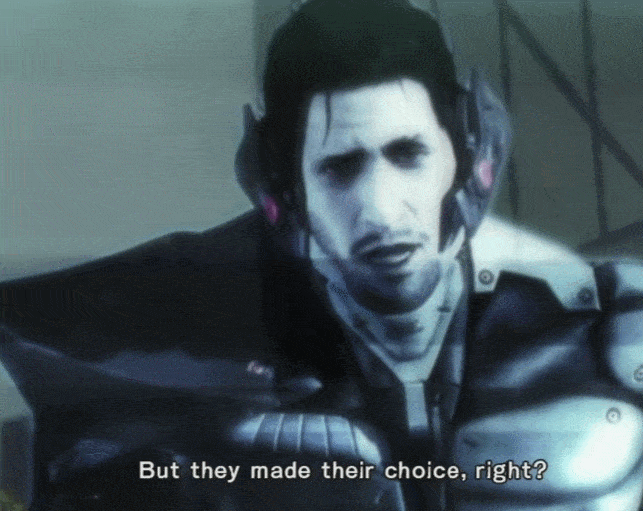
This is the transformation that Samuel could not go through at the time. Unable to handle his thirst for revenge and justice on his own, he falls under the influence of Armstrong's memes. In the end, this makes him doubt his own ideals, and later he rejects them altogether. It's clear from Sam's backstory that he's not a bad guy. Rather, a guy who got into the wrong company and chose the wrong path. There is something in his character about samurai stories, especially the Hagakure - a treatise on bushido - the samurai's unwritten code of honor. The series of stories was created by Nabeshima Mitsushige in 1716. In them, he told the stories of the former samurai Yamamoto Tsunetomo, who after the death of his master became a ronin - an exiled samurai. In short, the meaning of the book can be described by the phrase 'A samurai has no goal - there is only a path', which was attributed to Yamamoto himself (although he did not actually say anything like that).

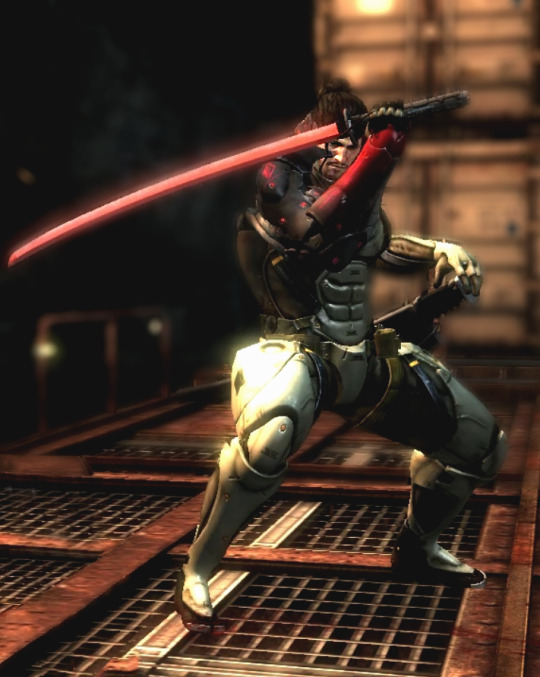
Kuniyoshi (1797 - 1861). Tomimori Sukeemon Masakata from the Biographies of the Loyal Retainers series. Woodblock Print, c. 1847. Source: Ronin Gallery
Sam begins his samurai path to avenge his father's death, but as his purpose crumbles, he becomes increasingly hesitant and ends up becoming a mercenary for terrorists. The transformation from a respected man to a robber was quite a common phenomenon among samurai during the turbulent times of Japanese history. But Sam's path was not in vain and meaningless. Yamamoto commanded the samurai to find their own way in life, discarding thoughts about the past, future and everyday problems. This path was paved on the battlefield with a sword (or rather a bow and a horse), and to die in battle for a samurai is the highest honor. Sam and Raiden's battle was a test of their ideas; a turning point that had to decide whose ideology has the right to exist. Samuel himself speaks about this in his posthumous message.
Both were not enemies, but rather adversaries, each had their own convictions at stake as a kind of equivalent of honor. Sam's mindset and fate shows that personal beliefs do have weight. If they are true and worth fighting for, if they are the same strong memes, they will continue to exist. That is why, finally accepting his nature as an assassin, the sword as a weapon, and the goal as completely achievable, Raiden defeats Samuel.
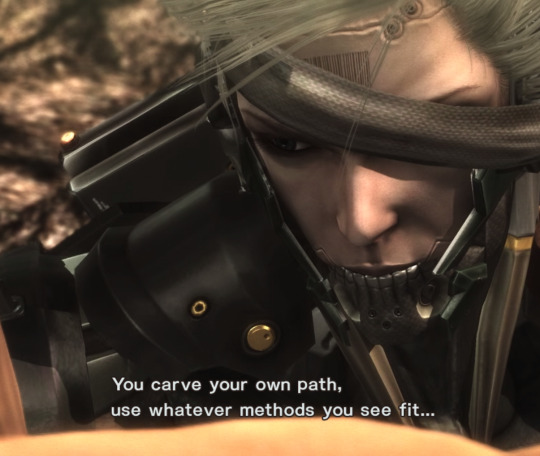
Totally forgot I started to write it, so i had to finish it, haha.
#game review#video games#gaming#videogames#metal gear#metal gear series#metal gear rising#metal gear rising revengeance#mgrr#mgr raiden#raiden mgr#mgr monsoon#samuel rodrigues#jetstream sam#my articles#japanese art#samurai
55 notes
·
View notes
Text
I really need bilingual Japanese short story books to not have romaji in them ever. The stories are written in hiragana/kanji with furigana and yet vocab lists have romaji. WHY. You're already assuming the reader can read at least hiragana! If they can't even read hiragana they probably aren't ready for short stories! So why include romaji?!?! Furigana is enough!
#ruffled feathers#learning japanese#started reading another one today and i'm so annoyed. WHY. WHY WOULD YOU INCLUDE ROMAJI#there is not logic to it and it's just annoying#absolutely despise romaji with a passion it needs to die#the only place romaji belongs is in languages using latin script where there's no assumption the reader would know japanese#for example i would expect a bbc article written in english to write 'ikigai' and not いきがい. that is reasonable
18 notes
·
View notes
Text
An interesting article about the history of the leader of the Toyoko Kids, Howl. This details his yakuza background, how he used a false title of social worker to take control of the gang, the way he went about creating the current hierarchy within the gang, and the murder and child r*pe charges he currently faces. You can find more information on this man, the face of Toyoko Kids, by searching for 「歌舞伎町卍会」. This is not an innocent group. This is a gang currently led by a r*pist, with a hierarchy, that convinces kids, teens, and young adults to run away to the red-light district, is responsible for lynchings, stabbings, child prostitution, and drug dealing. This gang is why 地雷系 is associated with any aesthetics at all, because the runaway girls who work for this gang frequently donned a few pre-existing fashions to please Howl - to try to be his "type". This is the origin of "jirai kei" as the west knows it.
235 notes
·
View notes
Text

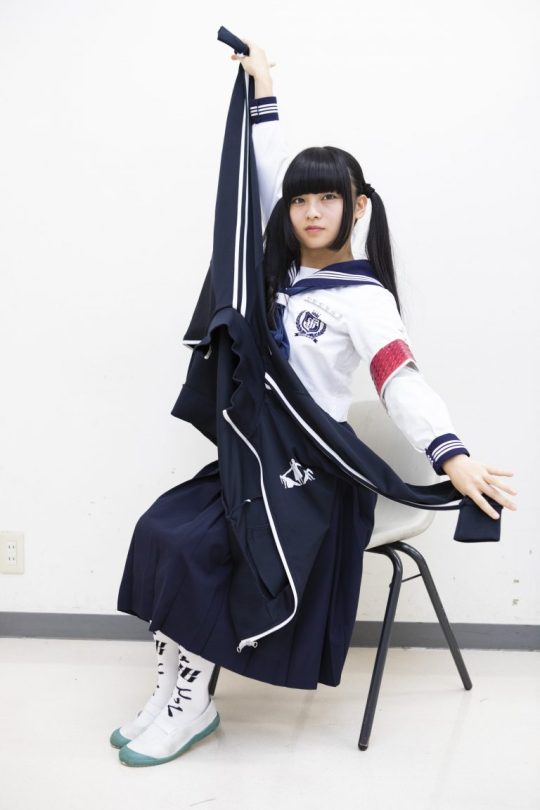
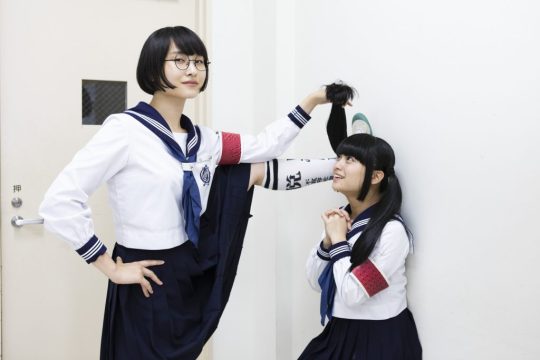
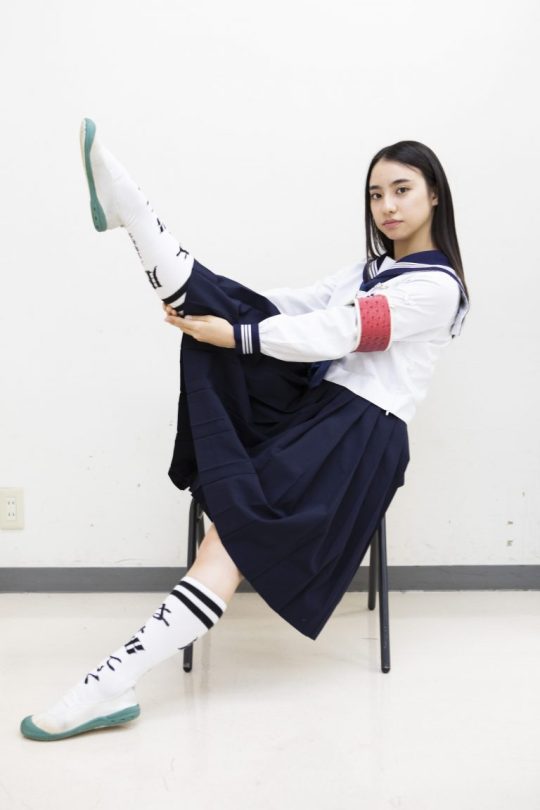



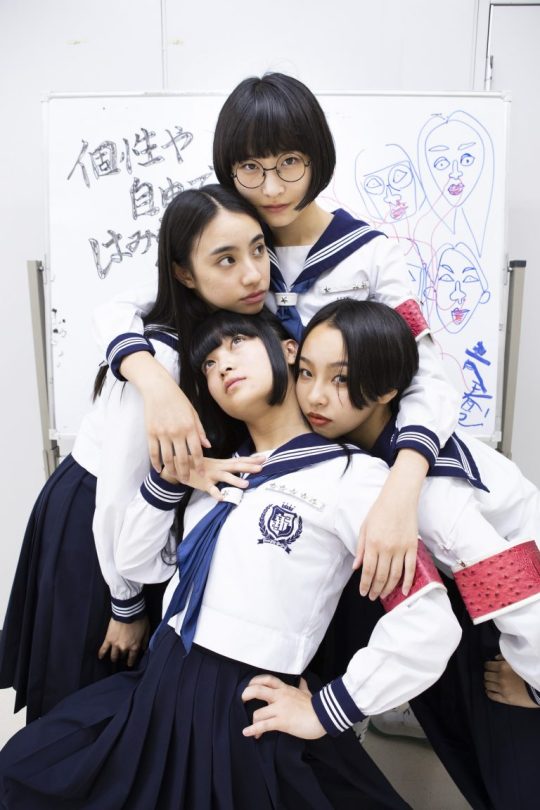

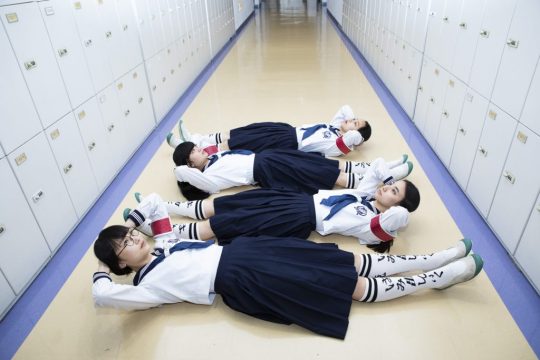
THE COMM [2019 September 23]
#atarashii gakko#japan leaders#suzuka#mizyu#rin#kanon#group#jpop#新しい学校のリーダーズ#88 rising#Japanese artists#jrock#the comm#2019#article
233 notes
·
View notes
Text
Daily Practice: Buzzfeed Japan Article: Leek bacon Korean pancake

Source: https://www.buzzfeed.com/jp/mayumioowada/leek-korean-pancake
【ニラ買ったら全部これにして】焼くだけで家族が爆食い!振り返ったら皿から消えてる絶品レシピ
"If you buy green onions, use them all in this one!" Just bake this and your family will devour it! An exquisite recipe that will disappear off of the plate entirely as soon as you look away!
ニラが主役のおかずレシピ。一度食べたらやみつきです。
ニラの香りとベーコンのコクがたまらない!ぜひ、作ってみてくださいね
This is a recipe for a side dish where green onions are the star. The smell of the green onions and the richness of the bacon are irresistible! You should absolutely try this!
ニラとベーコンのチヂミ
Leek and Bacon Korean Pancake
2人分 - 2 servings
材料:Ingredients
ニラ 1束 Green onion 1 bunch
【A】ベーコン(1センチの長さに切る) 2枚
Two pieces of bacon (Cut into 1 centimeter lengths) 2 pieces
【A】卵 1個 Egg, 1
【A】薄力粉 大さじ2 Flour 1 tbsp
【A】鶏ガラスープの素 小さじ1 Chicken soup stock 1 tsp
ごま油 大さじ1 Sesame oil 1 tbsp
作り方:How to make
① ニラは5センチの長さに切る。Cut the green onions to a length of 5 centimeters.
② ボウルに①、【A】を入れてよく混ぜる。Add the green onions from step one, and all ingredients marked with 【A】 to a bowl and mix well.
③ フライパンにごま油をひいて中火で熱し、②を広げる。両面をこんがりと焼いたら、完成!Heat the sesame oil over medium heat in a frypan, spread the mixture from step two into the pan. Fry until brown on both sides, and you're done!
お好みで酢じょうゆにつけて召し上がれ!Top with your favorite vinegar soy sauce and enjoy!
What I learned:
Ingredient lists in Japanese recipes can sometimes be separated by what goes with what in a bowl by using different things like 【A】.
New to me Vocab:
ニラ - Green onion/leeks
鶏ガラスープ (とりガラスープ)- Chicken broth
主役 (しゅやく) - Leading part (in a play etc. The star!)
爆食い (ばくぐい) - Eat voraciously
#recipe#japanese learning#langblr#article#buzzfeed japan#translation#vocab#japanese langblr#daily Japanese study
9 notes
·
View notes
Text
After more than a year of work on this, @0hana0fubuki0 and I are finally able to present our translation of the Religion chapter featured in the TPN Western Literature Analysis book by Kei Toda!
Disclaimers:
The translations aren't perfect and the wordings picked might not match the desired nuance of the author, as the main translator is not a native Japanese speaker. If there are things that are unsure by the translator, they will be addressed later at the bottom.
From what I can remember, this book was published at least a few weeks/months before the Mystic Code fanbook and 3rd light novel got released (and based on Part 3, also possibly finished before the last few chapters of the manga were out), so certain observations written here may or may not have been made obsolete by any new information revealed in these specific sources.
Names and terms used within the series follow the Viz English translation, and mentions of the manga’s timeline are double-referenced with the fanbook.
The ESV translation is used for the Bible verses mentioned in-text.
Another thing to note is that Kei Toda is looking through this topic as a Western literature/culture scholar, and not necessarily as a theologian.
#Yakusoku no Neverland#The Promised Neverland#TPN Reference#Religion#Kei Toda#I'm now realizing the showing this off here in public might be the equivalent of a flash bomb given the topic#But my friend and I worked really hard to see and finish this project through to the end SO YOLO I GUESS#I had to do so research to make sure of certain parts of this translation for factual accuracy#This chapter was apparently written in 1st person in Japanese and I'm not even sure if that's the standard for this type of thing#I'm too used to seeing 3rd person but in scientific/health-related articles#Christianity#Judaism#Stonehenge
30 notes
·
View notes
Text

#no alt#I CAN NEVER BRING MYSELF TO SAY IT TO PEOPLE'S FACES..........#Like as far as I'm aware she's not someone with power or possibly the drive to do much to actively hurt trans women#and i certainly don't keep up with a TERF's twitter. but oh boy did she go on a transphobic retweeting spree#like very obvious baseline transphobic arguments against trans women#but since they were all in japanese even those who do follow her in the western fandom just#saw a bunch of articles#that meant nothing to them#i'm mostly aghast because i loved her stuff#and you'd think the creator of he/him lesbian the song would be aight with trans people
7 notes
·
View notes